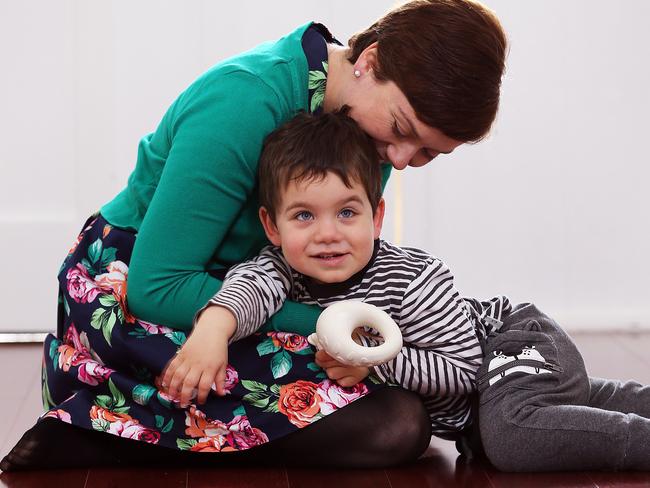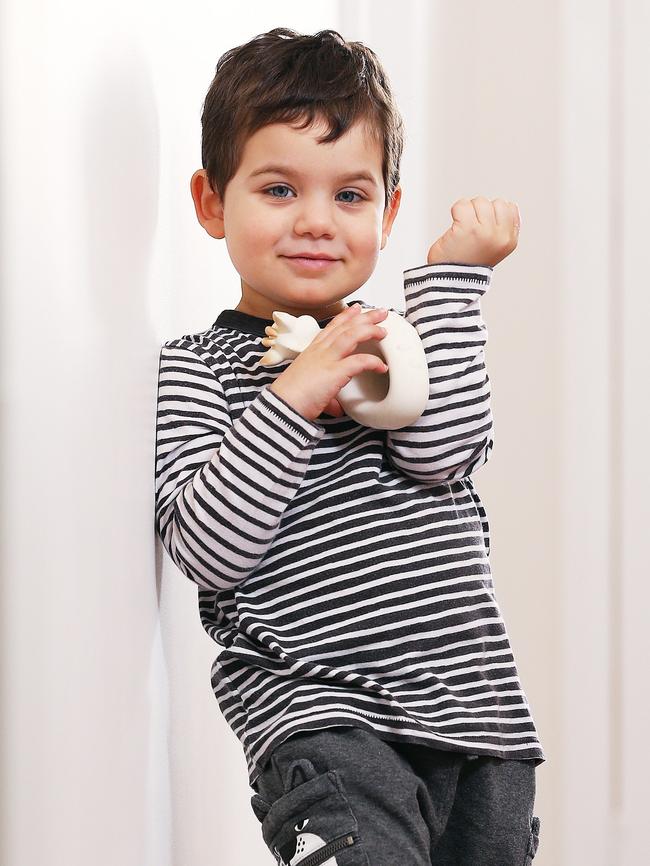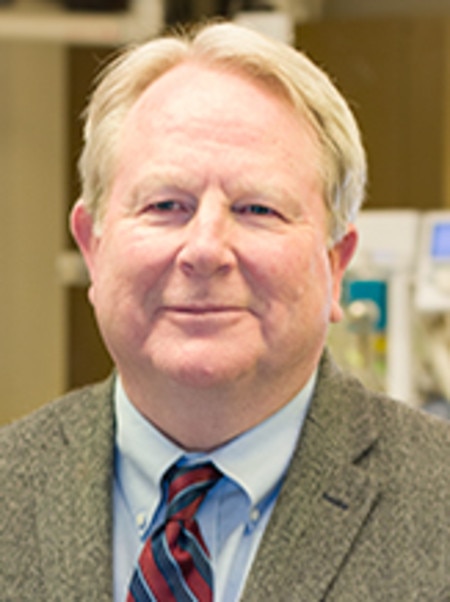Autism treatment: Boys who took suramin improved in language and interaction
DOCTORS believe they may have made a breakthrough in treating autism after children injected with a drug once used to fight African sleeping sickness showed remarkable improvements.

NSW
Don't miss out on the headlines from NSW. Followed categories will be added to My News.
- ‘Healing ministry’ autism claims offer only false hope: doctors
- NDIS a ‘game-changer’ for families living with autism
- Sickening attack by bullies on autistic teenager
DOCTORS believe they may have made a breakthrough in treating autism after children injected with a drug once used to fight African sleeping sickness (trypanosomiasis) showed remarkable improvements.
The drug suramin, created a century ago, has shown promise, with a single intravenous dose “associated with improved scores for language, social interaction, and decreased restricted or repetitive behaviours”.
None of these improvements occurred in the children who received placebo during the study, published in the Annals of Clinical and Translational Neurology.

The boys given suramin all improved, with some parents reporting their “locked in” children began to communicate, the trial’s author Robert K. Naviaux, of California University’s Mitochondrial and Metabolic Disease Centre, said.
“After the single dose, it was almost like a roadblock had been released,” Professor Naviaux said.
One parent of an 11-year-old boy in the trial likened the change in his son to the movie Awakenings: “Just one dose of suramin gave us a glimpse of that child who was locked in by his disease.
“The first night, after eating all his dinner, he calmly looked up at me and said ‘I finished my dinner’. He had never said this before. Usually he would say ‘I did it’ when he finished his dinner.”


Prof Naviaux said the trial, which involved 10 boys, was based on the cell danger hypothesis: that children with ASD had metabolic responses that produced “purinergic signalling” or communications between cells that affected the brain, gut and immune system. Suramin blocked the signalling.
“Suramin works by removing negative signals that block or slow natural child development. It is more like removing the brakes than pressing the accelerator,” Prof Naviaux told The Sunday Telegraph.
“Our research is leading us to the conclusion that autism is caused by a treatable metabolic syndrome in many children.”
He said as the single dose of the drug wore off over six weeks, the symptoms returned.
“It is fair to say that by eight weeks, most of these improvements gradually faded, although some of the motor skills that were learned during the time of treatment, like learning to tie your shoes, were maintained even after the language and social benefits had waned. That’s why we need to look at a few doses over a few months in the next study,” Prof Naviaux said.
RELATED: MAN’S WAY WITH NUMBERS
The study was blazing the trail for the development of drugs that blocked purinergic signalling he said.
“Before our work, no one knew that purinergic signalling abnormalities were a part of autism. Now we do, and new drugs can be developed rationally and systematically,” Prof Naviaux said.
The next step was to raise funds to conduct a larger study involving 60 children, he said.
Sydney University’s Centre for Disability Research and Policy Professor Stewart Einfeld was cautious about the results because some children developed a rash that may have compromised the blind study.
“The rash is a big problem, which they acknowledge in the discussion. Unfortunately, they don’t say who got it, but the implication is that the ones who received the active drug got it. This means the blinding was compromised,” he said.
Julie Coorey’s son Michael, 3, has ASD. He is doing 25 hours of evidenced-based treatment called applied behavioural analysis each week.
The Lane Cove mum has read the study and was cautious, saying more research was needed.


